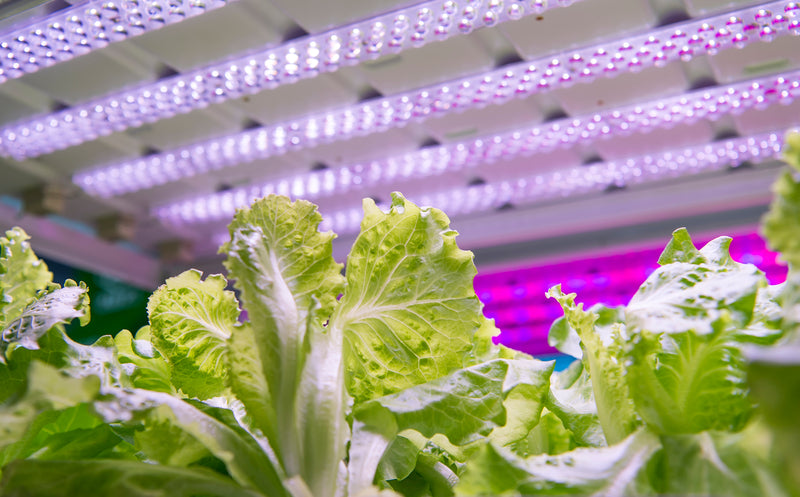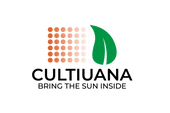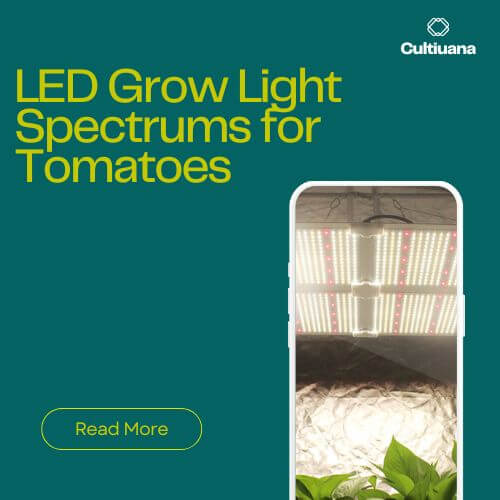
Everything About Hydroponics Grow Lights You Need to Know
Hydroponics is a technique that growers use to grow plants with the help of water-based solutions and nutrients at home.
Usually, the traditional way of growing plants consists of different soil mixtures and fertilizers given to plants to nurture, but not in the case of hydroponics.

The Hydroponics environment is entirely dependent on nutrients, hydration, and oxygen directly given to the plant’s roots that help them to grow quickly and cut off the harvesting time by half.
Since this technique is only applicable to indoor environments, it requires special equipment like hydroponic grow lights to process photosynthesis.
LED grow lights are the only source of hydroponic plants to convert oxygen and water into energy. So many grow light options are available in the market, but the right one will help you make a difference.
This article will help you choose the right kind of plant grow light.
What Are Hydroponics Grow Lights?
The plants that grow in the hydroponics system usually don’t have access to the outside environment. Hence, they grow and harvest in a completely controlled and artificial environment.
There’s so much talk about sunlight when it comes to plant growth. Yes, there’s no way you can get better than sunlight, yet you can use other sources to fulfill its needs.
Since hydroponics is an artificial way of growing plants, it requires grow lights to mimic the sunlight, often referred to as hydroponics grow lights.

Why Hydroponics Grow Lights Are Essential?
As we said earlier, plants can only nurture if they get enough light throughout their growth.
Moreover, it’s the only thing that lets plants process photosynthesis, which utilizes sunlight or grows light (artificial light) to transform water and carbon dioxide into oxygen and glucose, which every living organism requires to survive. Without it, plants won’t grow or produce flowers and fruits.
On the contrary, not all require the exact amount of sun to thrive. Let's take the example of tomatoes and pepper plants that need extreme light intensity, promising to produce a lot of light.
Whereas lettuce and spinach are quite the opposite, which means they can grow and produce fruits in less intensity of light.
The point is, whether you grow less or high-intensity plants, you’ll need hydroponics grow lights for your indoor setup.
How to Measure Hydroponics Grow Lights?
PAR (Photosynthetic Active Radiation) is a measurement used to determine the intensity of light that plants absorb or perceive.

The higher the PAR the more intense the light source is for the plants. It measures the energy emitted by light in the 400-700nm wavelengths that is essential for optimal plant photosynthesis.
The unit for measuring PAR is called "photosynthetic photon flux density" (PPFD). PPFD counts the number of photons that hit a one-meter-square surface area per second, but only counts photons within the wavelength range that plants use for photosynthesis.
So a grow light that looks bright to the human eye, does not necessarily have a high PPFD.
Furthermore, the PPFD count is significantly affected by the distance between the grow light and the plants. This means that using a PAR meter is necessary to accurately measure whether your plants are receiving sufficient light.
The intensity of PAR varies based on the distance between the grow light and the plants being measured.
PPFD drops exponentially as the distance increases from the light fixture because grow lights have a limited number of photons compared to the sun. Generally, for every 12 inches of distance, the PAR drops by 50%.
How Hydroponics Grow Lights Works
The purpose of hydroponics grow lights is to mimic the sunlight artificially to fulfill the need of plants to complete the photosynthesis process.
Photosynthesis is a very important process for plants as the whole growth of plants depends on it.
Grow lights with an even mix of wavelengths ensure that plants receive light during the hours they need, including light color, light intensity, and day length as well.
Different Light Wavelengths and Their Effects on Plants
Light travels in waves and particles, and each wave determines the intensity and color of light.
Blue light depicts the shorter side of the wavelength than red light; hence, its energy is on the higher side. The general rule of thumb is that the shorter the wave is, the more energy it gets.
Different wavelengths suggest different colors, so plants' intensity should differ depending on the growth stage.
For example, at the early stage of vegetative growth, plants require more energy or light intensity; blue light would be ideal for this stage.
When it comes to the flowering and fruiting stage, plants require red light because they don’t require more energy.
The key consideration is that plants don’t thrive on just a single wavelength; they simultaneously consume a mix of all color spectrum.
That is why hydroponics grow lights are cleverly equipped to mimic the natural light that plants need to thrive.
Types of Hydroponic Grow Lights
Plenty of hydroponics lights are available in the market; each comes with its own combinations of advantages and disadvantages. The decision you make on hydroponics lights should depend on the nature and type of plant that you’re about to grow.

HID Lights
HID (High-Intensity Discharge) lights are commonly used grow lights in artificial environments. As the name suggests, it emits a lot of light when an electric current goes through the arc-tube.
Commercial growers mostly use HID lamps as they are efficient and produce enough intensity to light up a large grow area.
HID comes in three different options, i.e., Metal Halide (MH), Ceramic Metal Halide (CMH), and High-Pressure Sodium (HPS); each of them is best for their interest.
Metal Halide produces blue light (high-intensity), best for the vegetative phase, whereas High-Pressure Sodium has red light (low-intensity), best for flowering or fruiting stages.
Both CMH and MH lights can be used for vegetative and flowering phases, but HPS is only recommended for flowering plants.
Fluorescent Grow Lights
Fluorescent grow lights are quite the opposite of HID lights as they consume less energy and emit less heat.
Fluorescent grow lights are best for small or home growers. If we talk about its usage in a particular growth phase, it is better to use it for plants' low to medium light requirements.
Fluorescent lights can be used with the combination of HID during the vegetative and flowering phase. Like HIDs, Fluorescent lights come in two categories, i.e., Compact Fluorescent lamps (CFLs) and T5 Fluorescent lights.
Home growers mostly use CFLs as they are smaller and emit less heat. On the other hand, T5 Fluorescent lights produce high-intensity light and are recommended for commercial use only. The best thing about T5 Fluorescent lights is they don’t feed much electricity.

Light Emitting Diode (LED) Lights
LED grow lights have already set the standard in artificial/controlled environments because of their countless benefits. In contrast, LEDs are way more energy-efficient, emit less heat than HID bulbs/lamps, and can last up to 50 thousand hours.
There are 17 advantages about using LED grow lights for indoor growing.
The best thing you will find in LED lights is that you can set or tune the light spectrum according to the plant's requirements. You can either choose the red/blue or full-spectrum; you are in total command.

The Importance of Hydroponic Lighting
Well, we’ve covered pretty much about the hydroponics grow lights, like what is hydroponics systems, how they work, and what types of lights we can use. This section will depict the importance of hydroponic lighting in different ways.
Why is Hydroponic Lighting Important?
Light is an important aspect for plants to continue healthy growth and move to further phases. Traditional farmers/growers have the luxury of harnessing the sunlight to utilize their crops, but indoor farmers create artificial ways to fulfill the need for sunlight.
Even the greenhouses can’t store much heat for too long. There are places where the sun doesn’t come out for days; even greenhouses need additional support from artificial lights at that time.
Light Requirement for Hydroponic Plants
You already understand the basics of hydroponics systems and how they work in indoor environments. But you still wonder about the things involved in the hydroponics light system.
The following requirements are crucial for indoor growers when choosing hydroponics lights.
- Discovering the Effect of Light Duration
The time in which the plants or any other living organism receives light within the period of 24 hours is known as photoperiod.
The way in which a plant responds to the duration of light and darkness in a day is called Photoperiodism. The process above has a direct impact on the health and growth of the plant.
Generally, plants adjust the weather conditions by measuring the length and the characteristics of light they get.
For example, plants receive much more light on summer days as days are longer than usual in the summer season. On the other hand, winter days are quite the opposite.
The point is you have to balance the photoperiod while working in the indoor or hydroponics environment.
You have to mimic everything plants get from the outside environment and let them believe they are growing and thriving naturally.
- Impact of Light Intensity on Plant Growth
Apart from the duration of light that a plant gets each day, the intensity of light also plays a significant role in plants' health and growth.
It’s almost the same as photoperiod; you’ll have to balance light intensity according to the plant type you are growing.
Plants adapt well to low-light conditions and thrive adequately with lower lumens levels than high-light plants.
- What Light Level is Required for Hydroponics?
The level of light required for hydroponics depends upon the type of plants you are growing.
A foot-candle usually measures the light level. It defines the amount of light that a plant gets by one square foot from the plant's surface away from the light medium as equal to 1 candle.
In general, the low-light plants should receive light between 50-to-250-foot candles.
For medium light, plants should receive 250 to 1000-foot candles or 15W/sq ft of growing space.
And high-intensity plants prefer at least 1000-foot-candle or 20W/sq ft of growing space.
Frequently Asked Questions (FAQs) about Hydroponics Grow Lights
What is the best light for hydroponics?
Although there are plenty of options available for the hydroponics environment, the most efficient and reliable option that most growers agree on is LED grow lights.
However, LEDs are expensive, but they are long-lasting, cost cut-off over time.
Is it advisable to use LED grow lights for hydroponics?
In short, yes, LED grow lights for hydroponics have proven to be the best in the business. Many experienced growers are already using it for hydroponics lighting.
Is any type of light suitable for hydroponics?
LEDs are the most common grow lights used for hydroponics. They are easy to install and find and use less electricity than HPS and fluorescent. It also offers more intensity and produces bright light on the go.
What should be the distance of LED lights from plants?
200-watt LEDs should be placed between 12-20 inches at the top of the plant. Increasing the wattage means higher the placement of LEDs; a 1000W should be placed above the 35 to 45 inches right at the top of the plant.
Which color of light is effective for hydroponics?
For optimal results, it’s recommended to use full-spectrum LED grow lights for indoor growing as they mimic the natural sunlight. For a controlled growth of plants, the combination of red and blue wavelengths would be ideal.
Do LED lights perform better than HPS for hydroponics?
Both LED and HPS lights perform well for hydroponics. Regarding efficacy, LEDs have a much higher efficacy rate than HPS grow lights.
Should hydroponics lights be left on all the time?
Plants do love light as it’s the primary source of photosynthesis, but that doesn’t mean you can keep the lights on all the time.
Plants also need some dark hours to rest. The ideal time for seedlings to get light is 6 hours of light a day and 8 to 10 hours for mature plants.
How many hours should hydroponics lights be turned on?
As the general rule of thumb suggests, allow plants to get at least 14 to 16 hours of light in a hydroponics environment and 8 to 10 hours of darkness.




